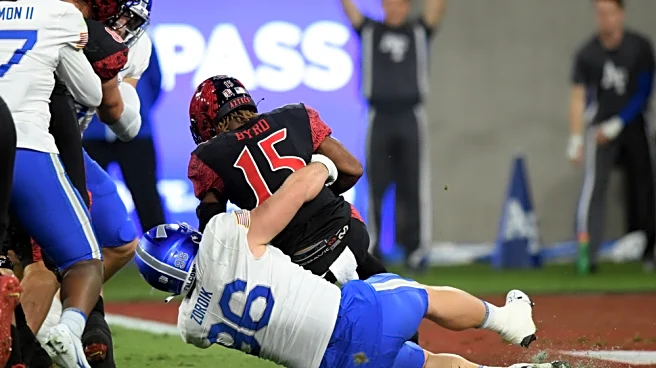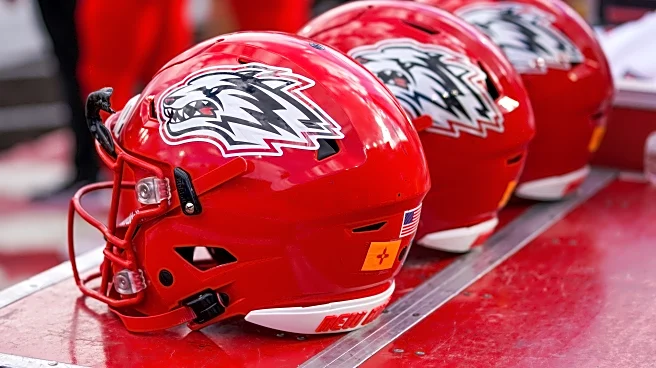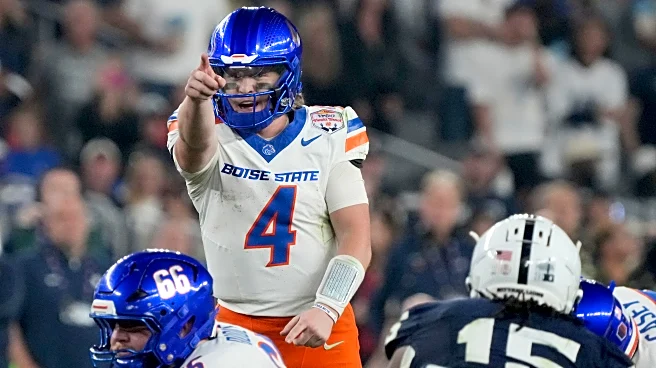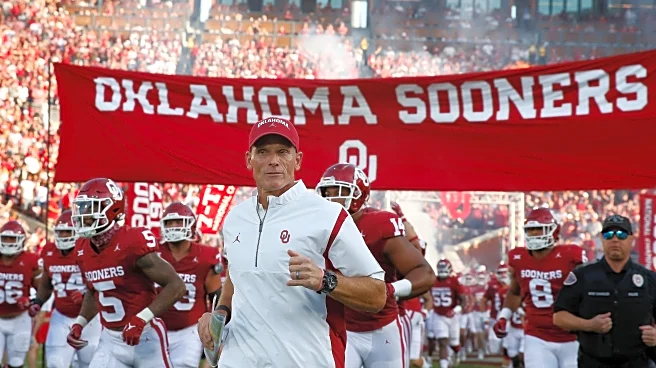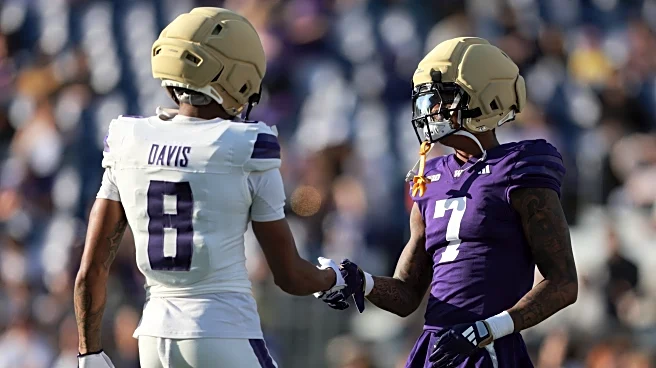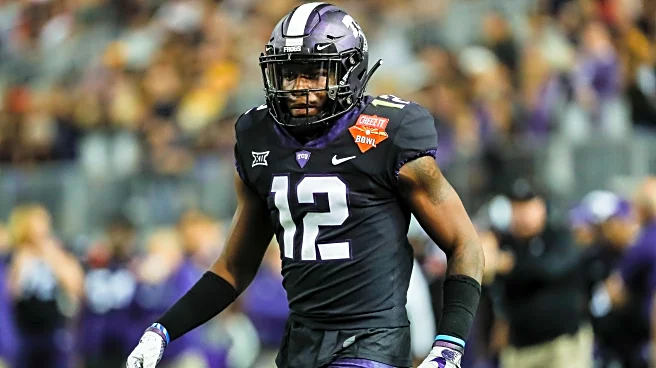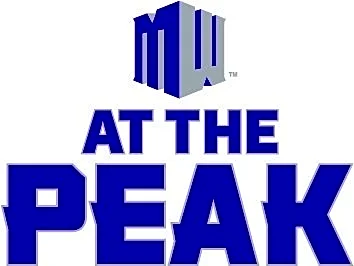
There are over 1,200 football players in the Mountain West. Even with how easy it is to follow the sport, plenty of players still go unnoticed. Sometimes they don’t play a position that gets much attention or is hard to find reliable stats for, like offensive line or nose tackle.
Sometimes they play for an underperforming team; the 1977 Atlanta Falcons defense allowed 9.2 points per game, a still standing NFL record for a single season, but few have heard about them because Atlanta didn’t make the playoffs
that year (they had a historically bad offense that year, averaging fewer than 13 points a game).
Other players get looked over simply because they weren’t the best at the time, despite being great. The race horse Sham is in the top five for fastest times ever for both the Kentucky Derby and the Preakness Stakes. He is largely forgotten because he finished second in both races to the legendary Secretariat.
I tried finding some of these players that may be overlooked for various reasons. I’m not going to get into why they’re not as well known, nor am I insisting they’re sleepers for awards, or that they weren’t appreciated in the first place. Again, with over 1,200 players across 12 teams, there’s a good chance a number of fans haven’t heard of these players or know much about them.
We could also spend hours debating on what exactly “Under the Radar” means, so I’m going to limit it to players who were never named 1st or 2nd team all conference. They may have been named honorable mention, but it kinda seems like the Mountain West gives every team five of those players by default (that, or it was an insanely bizarre coincidence that every team last year got exactly five). I also won’t have time to go over every possible underrated player, so feel free to mention more in the comments.
*PFF stats and grades reflect regular season only – it’s a bit unfair to include the postseason due to how much that is impacted by coaching changes, the transfer portal, players sitting, and coaches preoccupied with recruiting. Other stats come from CFB Reference.
Payton Zdroik – Air Force – Defensive Line
The first player I wanted to go over was probably the biggest snub from last year’s All conference team – Zdroik didn’t even make the honorable mention list. Last season he had a good case as being one of the top 25 interior defensive linemen nationally. During the regular season, per PFF his 21 quarterback hurries were 15th most and his pass rush grade of 90.4 was second best among defensive tackles. His 32 hurries were also 26th most over the past two seasons.
Zdroik isn’t just a good pass rusher, he’s also great against the run. In each of the past two years PFF has him top 10 against the run among defensive tackles. But probably the best way to quantify his impact is by comparing how Air Force’s defense did when Zdroik didn’t play. Last year, when he played Air Force gave up an average of 138 rushing yards a game and 4.2 a carry. In the two games Zdroik didn’t play, the average shot up to 230 yards a game and 6 yards a carry.
Zdroik is starting to get some attention though. Both Athlon and Phil Steele name him to their preseason all conference teams. Better late than never!
Malik Sherrod – Boise State – Running Back
The Mountain West has had some great running backs, even in recent history. They’re tied with the Big 10 for most running backs over the past 10 years to hit the 2,000 yard mark with three. Sherrod very much was on his way to being another one of those in 2023:
That year he ran for 966 yards and nine touchdowns. He also had 44 receptions, third most among running backs nationally. On top of all that he’s a decent returner, including a kickoff return against Boise State (at the 2:19 mark in the highlight video above).
But, then in 2024 injuries happened. Sherrod managed to only play in four games, and was shut down for the year by October. After the season Sherrod decided to use his extra year of eligibility from playing in 2020 to return for a second senior year, but transferred to Boise State, where he’s reunited with James Montgomery, the running back coach at Fresno during the 2022 season.
By all accounts Sherrod seems to be healthy, and has looked impressive so far this offseason. However, there’s still a chance he’ll fly under the radar this year. Boise has one of the deepest backfields in the country, despite losing Heisman Runner up Ashton Jeanty. Sire Gaines might be the starter and is expected by some to be one of the best backs in the conference. Jambres Dubar is a former four star recruit that has been patiently waiting behind Jeanty the past two seasons. Unless you’re a triple option team like Air Force, it’s hard for every good running back to stand out in a deep backfield. But, with Sherrod’s versatility, I’m expecting him to have a fun highlight reel this year.
Justin Marshall – Colorado State – Running Back
Sherrod flying under the radar makes somewhat sense, given he was injured last year. But I can’t figure out why Justin Marshall isn’t getting as much attention. In his first three career games in 2023, this is what he did:

That’s pretty much as good a start as it gets in your career. Unfortunately that season was limited to three games due to injuries. Last year splitting carries with Avery Morrow, Marshall still gained 746 yards and four touchdowns, including being one of the three players to get 100+ rushing yards against Texas last year in the season opener.
Running back is arguably the most physically demanding position in football, so seeing one do well while relatively young in their career is pretty rare. In fact, I looked back to 2013 to find all the cases of running backs gaining 700+ yards in their first 13 games (while getting significant playing as a freshman), and it isn’t a big list:

Just to be clear, this isn’t me nitpicking the best backs who also gained 700+ yards as a young back, this is everyone who did. They just coincidentally happened to be among the best running backs in their teams’ history. So it isn’t crazy to speculate that Marshall may go down as Colorado State’s best running back ever.
I’ve tried to find more about Marshall, but there isn’t much. Even when you try to look up “Justin Marshall Colorado State Highlights”, not much pops up. This very well could be a “Sham Racehorse” type situation that I brought up in the beginning, where one is good but gets overlooked because someone in a similar role is in the middle of a historic run. Jeanty pretty much monopolized the attention among running backs nationwide last year, while Marshall was the complimentary back on his own team. However, of returning Mountain West backs, only UNLV’s Jai’Den Thomas had more rushing yards last year. I’m fully expecting Marshall to be one of the top two or three backs in the conference this year.
Jacob Spomer – Fresno State – Left Tackle
I’m going to give you some advanced career stats for Spomer and compare them to Kage Casey, the consensus best lineman in the conference:

No one is going to spend much time arguing against Casey being the best left tackle in the conference. But honestly, over the past three years, I was surprised at how close Spomer was in these areas. He does allow more sacks, some of which can be blamed on the quarterback, but for overall pressure he’s in the same league as Casey. In fact, PFF has given them the same overall efficiency rating of 98 (on a scale of 0 – 100).
Spomer was honorable mention his first two seasons as a starter, but an ACL injury back in 2023 severely limited his playing time last year. Spomer only appeared in four games, but finished as PFF’s second highest rated lineman in the Mountain West last year. In the two years before that he was Honorable Mention in back-to-back years.
However, for his senior year the Fresno plans to move him to center, where some think he’s more suited to play. He’s on the watch list for all conference honors. Hopefully this year he gets more than Honorable Mention.
Walker Eget – San Jose – Quarterback
I was skeptical of San Jose switching from Emmett Brown to Eget mid-season last year. In his first four starts, Brown completed 62% of his passes for 1,290 yards (average of 322 a game) for 13 touchdowns against only four picks, with a passer rating of 152.7. San Jose went 3-1 in that stretch, with the only loss coming in double overtime on the road against Washington State. San Jose looked like a team to watch out for.
Then against Nevada and Colorado State, Eget started to get more time, and was the full time starter by mid October. I still couldn’t find out why, especially when you look at how poorly Eget performed in his first five games with meaningful time:

Doesn’t really give much confidence, especially with them going 2-3 in those games. At that point I wrote him off, but while putting this together I looked at his final four games:

Those first four games Brown looked pretty good in came against Sacramento State, Air Force, Kennesaw State, and Washington State – outside of Washington, not exactly a fearful stretch. Those last four games Eget showed good improvement came in their toughest stretch of the year. Those four opponents were Boise, UNLV, Stanford, and South Florida (in the Hawai’i Bowl). So maybe San Jose is on to something?
That ‘something’ may be how much better Eget was at facing pressure. Despite having 111 more pass attempts across three additional games, Eget took five sacks to Brown’s seven. PFF tracks how often a quarterback is responsible for pressure versus the offensive line, and they credited Eget with being the culprit on 7.3% of drop backs – fifth best nationally among qualifiers, and sixth best overall when facing pressure.
You can have great receivers and a great offensive line, but it won’t matter much if your quarterback can’t stay calm.
Tyce Westland – Wyoming – Defensive End
Quick football note before I go over Westland: most defensive coaches prioritize pressure on the quarterback rather than actual sacks, Bill Belichick being one of them. Not that sacks are bad, that is the goal, but they don’t tell the full story. Pretty much any quarterback that is comfortable in the pocket will kill you, so making them uncomfortable is the ultimate goal of pass rushers. When under pressure they pay less attention to coverage and where the receivers are, and as a result may throw the ball away or attempt a bad pass.
The reason I bring this up is because Westland is an example of being an effective edge rusher without getting sacks. Among edge defenders in the conference last year, Westland was tied for tenth in total pressures per PFF, with 26 (sum of total sacks, QB hits, and QB hurries). The interesting part was Westland was only 22nd in total snaps played rushing the passer.
Pressuring the quarterback 26 times on 180 attempts is insane efficiency (14.44%). In fact, only Ahmed Hassanein, now with the Detroit Lions, did better last year (15.47%) among edge defenders.
Westland missed a few games last season, but was on fire the last month. Of those 26 pressures, 15 came in the final four games of the year. If you live and die by PFF grades, Westland is extremely under rated as a pass rusher. His 84.6 pass rushing grade was the highest among edge defenders with 100 snaps played.. He’s disciplined as well, only being called for a single penalty all year.
Typically when an edge rusher generates a lot of pressure and has few sacks, it’s common to see that get ‘corrected’ over the long run. You can only pressure the quarterback so many times without hitting him. Westland very much could be a surprise for teams this fall.
Conclusion
If I had all day to go over film, I’d probably highlight some more players. But unfortunately I don’t, so I have to rely on stats to help hunt down these types of guys. And if I did have time, again, there’s 1,200 players to look over. But that’s what makes football fun; there’s always an unknown player who will surprise you, or a player you know that is about to shock every one.
